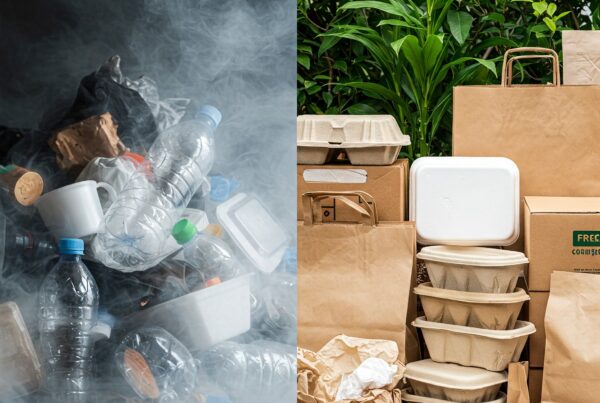The Role of DPI & Resolution in Print Quality
Understanding the role of DPI and resolution in print quality is essential for designers, marketers, and print professionals. When producing high-quality prints, details matter. DPI (dots per inch) and resolution are two key factors that directly impact the clarity, color accuracy, and overall sharpness of printed materials. If not set correctly, images may appear pixelated, blurry, or lose their intended vibrancy.
In this article, we’ll explore the difference between DPI and resolution, explain how they affect print quality, and share best practices for achieving sharp, professional-looking prints.
What is DPI?
DPI stands for Dots Per Inch. It measures how many individual ink dots are placed within one inch of a printed image.
Higher DPI values result in smoother gradients and crisper text. Professional printers use DPI to assess the quality of source files.
Why DPI Matters
High DPI leads to clear, detailed prints. Low DPI images may appear pixelated or blurry.
Tip: Always check your image’s DPI before printing. Aim for at least 300 DPI for best quality.
Understanding Resolution
Resolution indicates the amount of detail an image holds and is typically measured in pixels per inch (PPI). A high-resolution image means more pixels per inch, which results in greater clarity and detail when printed.
Digital vs. Print Resolution
While DPI applies to printing, PPI is used for digital displays. Many digital cameras capture images above 300 PPI, ideal for print when converted properly.
Note: High resolution is crucial for detailed, professional prints.
Quick Fact: Many digital cameras capture images above 300 PPI, which is ideal if files are properly converted for print.
How DPI and Resolution Impact Print Quality
Image Clarity
High DPI produces smoother color transitions and finer details. More dots per inch result in sharper, more precise prints.
A high-resolution file ensures images remain clear and detailed, even when scaled.
Color Accuracy and Detail
Accurate color reproduction depends on both DPI and resolution. Proper settings minimize color shifts when converting from RGB to CMYK. This helps preserve fine details and results in true-to-life colors.
Real-World Examples
- Brochures and Flyers: Require high DPI for crisp, clear text and images.
- Large Format Prints: Need high resolution to prevent pixelation on posters and banners.
DPI vs. PPI: Understanding the Difference
Although often used interchangeably, DPI and PPI are different measurements.
DPI Defined
Dots Per Inch (DPI) refers to the number of ink dots printed per inch. It is a measure of print output quality.
PPI Defined
PPI (Pixels Per Inch) refers to the number of pixels in a digital image. It is crucial for on-screen clarity.
When preparing files for print, work with PPI for your digital images and ensure that the printer applies the correct DPI.
Best Practices for Achieving Optimal Print Quality
Start with High-Quality Images
Use images with a minimum of 300 PPI. High-quality source files, such as raw images or high-resolution JPEGs/PNGs, help prevent quality loss.
Use Professional Software
Leverage tools like Adobe Photoshop, Illustrator, or InDesign. Set your document to CMYK mode early in the design process to simulate print conditions.
Check Printer Specifications
Consult with your printer for recommended DPI and resolution settings. Use soft proofing to preview printed colors and make necessary adjustments.
Optimize and Manage Colors
Use image compression tools that maintain quality while reducing file size. A slight sharpening effect can help offset any potential blurriness. Embed the correct CMYK color profile and calibrate your monitor regularly.
Common Mistakes in Print Preparation
Low-Resolution Files
Images below 300 PPI can lead to pixelation. Always verify your image resolution before printing.
Incorrect Color Mode
Submitting files in RGB mode, instead of converting to CMYK, may result in unexpected color shifts. Convert your files early in the design process.
Ignoring Printer Guidelines
Each printer has unique specifications. Not following these can lead to suboptimal print results.
Over-Compression
Excessive compression may strip important details from your images. Use compression techniques that preserve quality.
Checklist:
- Verify images are 300 PPI or higher.
- Set documents to CMYK mode.
- Use soft proofing to preview printed colors.
Tools & Techniques for Measuring DPI and Resolution
Software Tools
- Adobe Photoshop: Use Image > Image Size to check DPI.
- Adobe Illustrator: Verify resolution for all linked images.
- InDesign: Check the effective resolution in the Links panel.
Online Tools
There are free online tools available to quickly assess your image’s DPI and resolution.
Best Practices
Regularly check your images before finalizing designs. Always print a test proof to catch any issues early.
Case Studies & Real-World Examples
Brochure Design for a High-End Brand
A luxury brand produced a brochure using 300 PPI images and CMYK mode. The final product featured crisp details and vibrant colors.
Poster Printing for an Art Exhibition
After initial tests revealed pixelation, an art exhibition upgraded to high-resolution files. The revised posters showed exceptional clarity and color accuracy.
Packaging Design for Consumer Products
A consumer products company revamped its packaging design using high DPI settings and proper resolution. The improved print quality boosted consumer perception and increased sales.
Frequently Asked Questions
1. What is the ideal DPI for printing?
For most high-quality prints, a minimum of 300 DPI is recommended. This ensures that images are sharp and detailed.
2. How does resolution affect printed images?
Resolution, measured in PPI, directly affects the detail and clarity of printed images. A higher resolution means more pixels per inch, resulting in a crisper, clearer image.
3. Can I use an RGB image for printing?
RGB images are designed for digital displays. For print, it is essential to convert the image to CMYK mode to ensure accurate color reproduction.
4. What tools can I use to check DPI and resolution?
Software such as Adobe Photoshop, Illustrator, and InDesign allow you to check and adjust DPI and resolution. Online tools are also available for quick analysis.
5. Why do printed colors sometimes look different from the screen?
The difference is due to the nature of color models. RGB is used for screens and CMYK for print. Converting RGB to CMYK may result in slight color variations if not managed properly.
Conclusion
Understanding DPI and resolution is crucial for achieving high-quality prints. By using high-quality images, professional software, and following printer guidelines, you can produce sharp, vibrant, and accurate printed materials. Implement these best practices today to see a noticeable improvement in your print quality.
For more insights on print technology and production best practices, explore our related article Understanding the CMYK vs. RGB Color Model in Printing.


